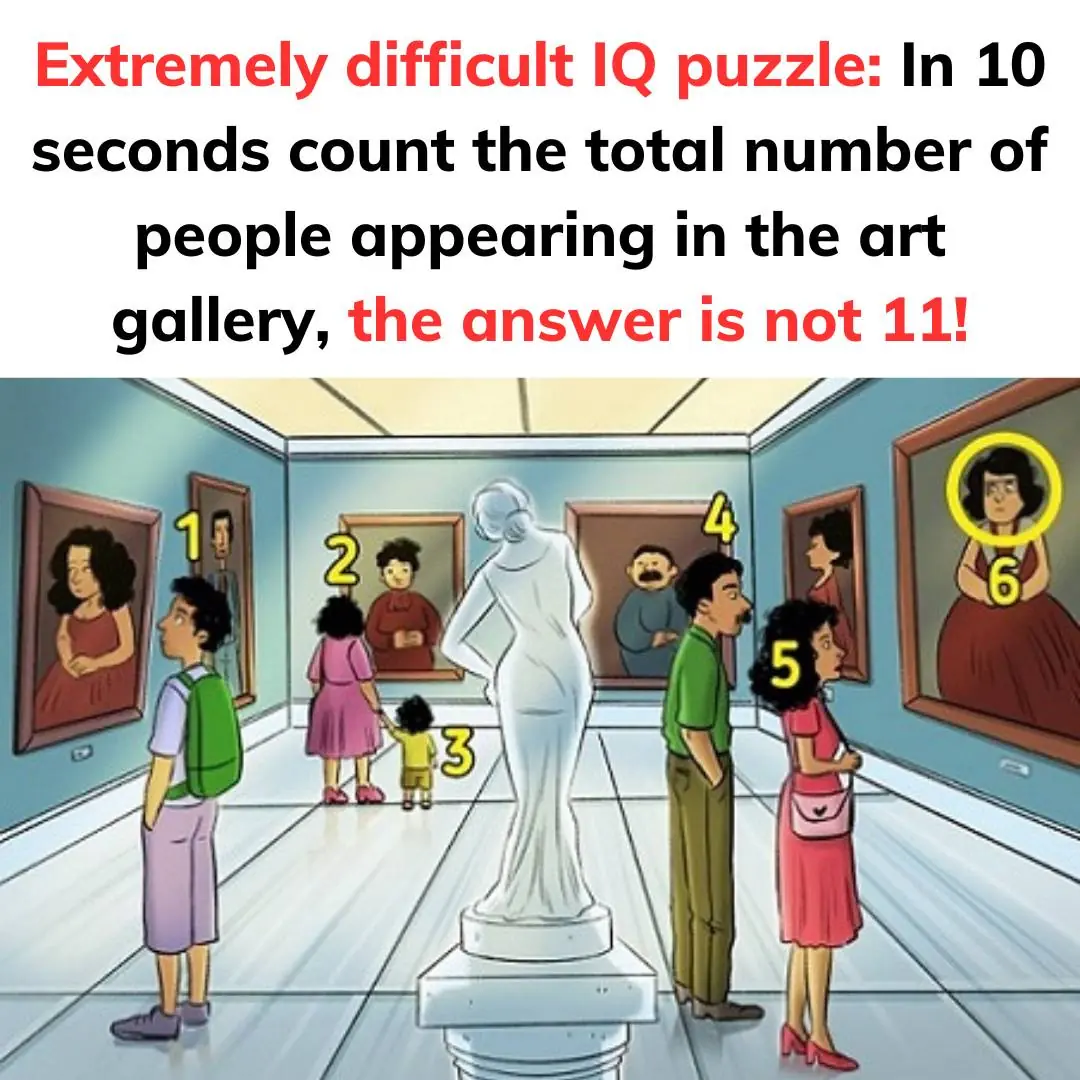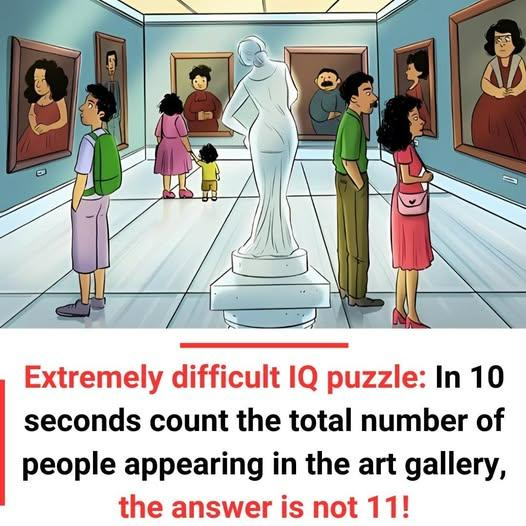Are you ready to put your observation skills and IQ to the test? This puzzle appears to be a simple image of an art gallery, but don’t be fooled – it’s a challenging brain teaser that requires close attention to detail. The task is straightforward: count the number of people inside the gallery. However, the answer is not as obvious as it seems.
Many people who attempt to solve this puzzle fall into one of two common traps. Some count 11 people, mistakenly including the images in the gallery and the statue as real individuals. Others count five people, but this is also incorrect. The correct answer lies in a cleverly hidden detail that many overlook.
The solution to the puzzle lies in one of the paintings on the wall. Specifically, the sixth person is hiding behind picture number 6. If you look closely, you’ll notice that the eyes in this painting are different from the others. A part of the eye is cut out, revealing a person standing behind the painting, using it as a disguise.
This puzzle is a classic example of how our brains can be deceived by visual tricks. We tend to rely on patterns and familiar cues to make sense of what we see. In this case, most people assume all the paintings in the gallery are just artwork, failing to notice the subtle difference in picture number 6.
So, why is this puzzle so challenging? The answer lies in the psychological principle of selective attention. Our brains tend to focus on what we expect to see, while overlooking subtle but important details. In this case, most observers assume that everything hanging on the gallery wall is just an art piece, and they miss the unusual detail in picture number 6.
This puzzle falls into the category of optical illusions, which challenge our visual perception. Optical illusions exploit our brain’s tendency to fill in gaps in visual data based on prior knowledge and experiences. By understanding how our brains process visual information, we can improve our observation skills and become better at spotting details that others miss.
If you want to improve your observation skills, here are a few techniques to try: slow down and look closer, change your perspective, focus on the outliers, train your brain with puzzles, and practice mindfulness.

In conclusion, this puzzle serves as a great reminder of how easily our brains can be deceived by visual tricks. By taking a closer look and questioning what we see, we can uncover hidden details and improve our observation skills. So, the next time you come across an optical illusion or a tricky puzzle, remember to take a second look – you never know what secrets might be waiting to be uncovered.


